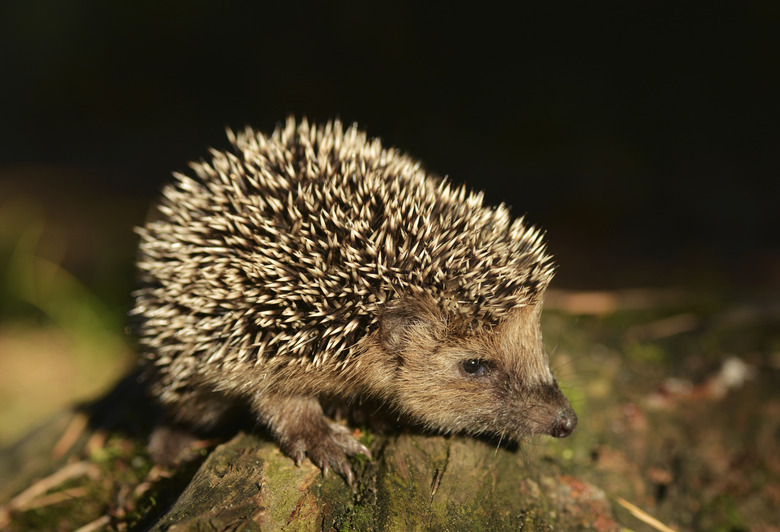Hedgehog Adaptation
Hedgehogs are found on several continents throughout the globe. These spiny animals have adapted to their environment by developing several defense mechanisms and a heightened sense of smell to detect food. Using these adaptations, hedgehogs can survive in a myriad of conditions.
Defense
Sharp spines cover the back of the hedgehog. If a hedgehog does not feel threatened, the spines angle in a way that allows the hedgehog to be touched. When a hedgehog enters a state of panic or needs defense, the hedgehog curls itself into a ball and extends its spines vertically for protection. These spines cannot be released from the hedgehog in an offensive attack but rather act as a defense mechanism against predators in the wild.
Senses
The hedgehog relies on its sense of smell above all other senses. By smelling his surroundings, the hedgehog detects familiar objects in its habitat from housing to food. The hedgehog uses its ears and eyes to spot predators. The sense of smell is important to the hedgehog, as it is a nocturnal animal.
Coloring
In order to blend in with its surroundings, especially rocks and trees, a hedgehog features brown or gray coloring with a light gray belly. Because of the relatively small size, roughly nine inches long and one and a half pounds in weight, the hedgehog relies on its coloring to avoid being spotted by predators.
Habitat
Hedgehogs are found in Europe, Asia, Africa and New Zealand. Hedgehogs are solitary creatures that make their home in grass or in holes under the ground. A nocturnal creature, hedgehogs patrol at night for food, climbing trees to consume insects and eggs found on the branches. The ability to climb allows hedgehogs to adapt to their surroundings with the ability to both burrow underground for safety and climb trees to escape predators.
Hibernation
Because of the climate in Europe, hedgehogs enter a state of hibernation to avoid extreme coldness and make up for the lack of food during winter months. Hedgehogs in Africa enter a state similar to hibernation during the dry months between January and March, except these hedgehogs will still venture out once a week to search for food. This ability to hibernate has allowed the hedgehog to adapt to various climates.
References
Cite This Article
MLA
Chruscinski, Dan. "Hedgehog Adaptation" sciencing.com, https://www.sciencing.com/hedgehog-adaptation-6558047/. 13 March 2018.
APA
Chruscinski, Dan. (2018, March 13). Hedgehog Adaptation. sciencing.com. Retrieved from https://www.sciencing.com/hedgehog-adaptation-6558047/
Chicago
Chruscinski, Dan. Hedgehog Adaptation last modified March 24, 2022. https://www.sciencing.com/hedgehog-adaptation-6558047/
